AgentOps helps developers see inside their AI agents by logging every prompt, action, and cost. This review explains how it works, its features, setup, and why it’s becoming the go-to debugging tool for AI developers.
How to Choose Between Printify and Etsy for Your POD Business in 2025

Print-on-demand has become the secret sauce for many entrepreneurs looking to start their own business without breaking the bank. Printify and Etsy are two popular platforms that have emerged as go-to options for aspiring sellers, each offering unique advantages for those looking to dip their toes into the e-commerce waters.
As reported by Forbes, Printify simplifies the process by handling printing and shipping, while Etsy provides a bustling marketplace for handmade and custom goods, making the choice between them a crucial decision for budding online merchants.
Printify vs. Etsy: Platform Overview

Printify and Etsy are like two different tools in a crafter's toolbox, each designed for specific tasks but potentially working together to create a masterpiece.
Printify is the Swiss Army knife of print-on-demand (POD) services. It's a dedicated platform that acts as a middleman between creators and a network of over 80 print providers across the globe 1.
Think of Printify as your personal assistant who takes care of all the nitty-gritty details of product creation and shipping. You design, they handle the rest. With Printify, you can create custom products ranging from t-shirts to phone cases, and even home decor items, all without holding any inventory 2.
One of Printify's standout features is its seamless integration with various e-commerce platforms, including Etsy 3. This integration is like a well-oiled machine, automatically syncing your product listings and orders between platforms.
When a customer places an order on your Etsy store, Printify springs into action, routing the order to the most suitable print provider, who then prints, packages, and ships the product directly to your customer. It's like having a silent partner who handles all the backend operations while you focus on design and marketing.
On the other hand, Etsy is more like a bustling craft fair that's open 24/7 online. It's an e-commerce platform that primarily caters to sellers of handmade, vintage (at least 20 years old), and craft supply items 4. Imagine a colorful marketplace where artisans and vintage collectors set up their virtual booths, showcasing unique and often one-of-a-kind items to a global audience of over 90 million buyers 3.
However, Etsy is not inherently designed for print-on-demand services. It's like trying to sell mass-produced items at a handmade craft fair - it's possible, but not without some workarounds. Etsy doesn't offer native POD capabilities, meaning sellers who want to offer custom-printed products need to either handle the printing and fulfillment themselves or use external POD services like Printify 5.
This is where the magic happens when you combine Printify with Etsy. It's like having the best of both worlds - Printify's automated POD capabilities and Etsy's vast, craft-loving audience. Sellers can leverage Etsy's established marketplace and built-in customer base while using Printify to handle the production and fulfillment of their custom designs 3.
However, it's important to note that while this combination can be powerful, it also comes with its own set of challenges. Etsy has strict policies about disclosing production partners, and sellers must ensure they comply with Etsy's handmade policy even when using POD services 4. It's like walking a tightrope - you need to balance the efficiency of POD with the handmade ethos of Etsy.
In essence, Printify is your behind-the-scenes production powerhouse, while Etsy is your storefront in a popular handmade marketplace. Understanding the strengths and limitations of each platform is crucial for crafting a successful POD business strategy.
User Interface and Features
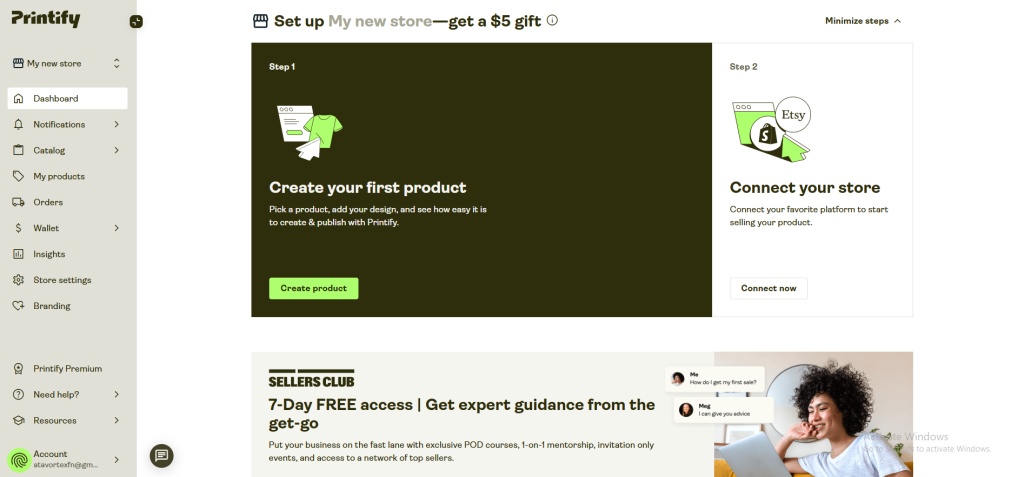
Printify offers a streamlined product listing process that simplifies the creation of print-on-demand items. Its user-friendly interface allows sellers to upload designs, select products, and generate mockups in just a few clicks 1.
The platform's built-in mockup generator provides high-resolution preview images with customizable backgrounds, making it easy to create professional-looking product images without external design tools. In contrast, Etsy's listing creation can be more time-consuming, requiring manual input of product details and separate creation of mockups 2.
For order management, Printify automates the entire workflow from order receipt to fulfillment, significantly reducing the seller's workload. When integrated with Etsy, Printify automatically processes orders, routes them to appropriate print providers, and updates tracking information 3.
Etsy, on its own, requires manual order processing and inventory tracking, which can be cumbersome for high-volume sellers 4. This automation difference is particularly noticeable in handling custom orders, where Printify's integration allows for easier product customization and order fulfillment compared to Etsy's manual approach 5.
UI and Functionality Comparison
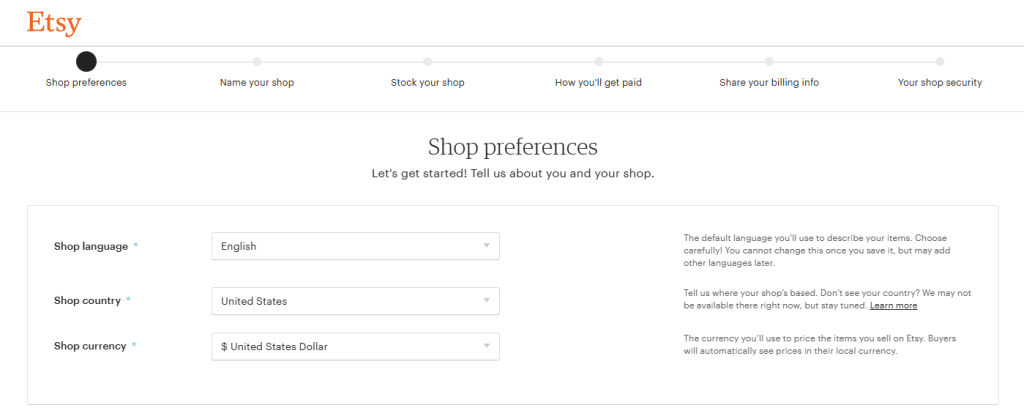
When it comes to product variants and customization, Printify is like a buffet of options, while Etsy is more like a set menu. Printify allows sellers to offer a wide range of customization options, including text, photos, clipart, maps, vectors, calendars, and even Spotify songs 1. This flexibility is a game-changer for print-on-demand businesses, allowing them to cater to diverse customer preferences.
On the other hand, Etsy's variant capabilities are more limited. Sellers can only add up to two dropdown menus for variations, with each menu accommodating a maximum of 70 values 2.
This restriction can be challenging for POD sellers who want to offer multiple customization options. For pricing and profit margins, Printify provides a transparent cost structure, allowing sellers to clearly see production costs and set their desired profit margins.
In contrast, Etsy's fee structure is more complex, including listing fees ($0.20 per item), transaction fees (6.5% of the sale price), and payment processing fees (3% + $0.25) 4. These fees can significantly impact POD profitability on Etsy, requiring sellers to carefully calculate their pricing to maintain healthy margins.
Product Options and Pricing

Printify offers a buffet of customization options, allowing sellers to create up to 100 product variants combining size and color 1. This flexibility is like having a magic wand for your product line, enabling you to cater to diverse customer preferences without juggling multiple listings.
On Etsy, however, you're limited to just two dropdown menus for variations, with each menu capped at 70 values 2. It's like trying to fit a gourmet meal into a lunchbox - possible, but not ideal for POD businesses offering extensive customization.
When it comes to pricing, Printify lays all its cards on the table. Its transparent cost structure lets you see production costs upfront, making it easy to set your profit margins 3.
Etsy, on the other hand, has a more complex fee structure that can take a bite out of your profits. With listing fees, transaction fees, and payment processing fees, selling on Etsy is like navigating a maze of costs 4.
For instance, a $20 t-shirt sale on Etsy could incur fees of around $2, significantly impacting your bottom line. Printify's straightforward approach allows for more predictable and potentially higher profit margins, especially for high-volume sellers.
Platform Connections and Growth

Printify is like a universal adapter for e-commerce platforms, seamlessly connecting with Etsy, Shopify, WooCommerce, and more 2. This versatility allows sellers to cast a wider net, reaching customers across multiple marketplaces without juggling separate inventories. In contrast, Etsy operates as a walled garden, limiting sellers to its own ecosystem 3. While this can provide a focused audience, it may constrain growth potential.
For inventory management, Printify acts as an automated stock keeper, updating product availability across all connected platforms in real-time 4. This hands-off approach saves time and reduces the risk of overselling.
Etsy, however, requires manual inventory tracking, which can be like trying to keep track of sand in an hourglass – time-consuming and prone to errors 5. Printify's automated system allows for easier scaling of operations, while Etsy's manual approach may become increasingly challenging as a business grows.
Customer Service Comparison
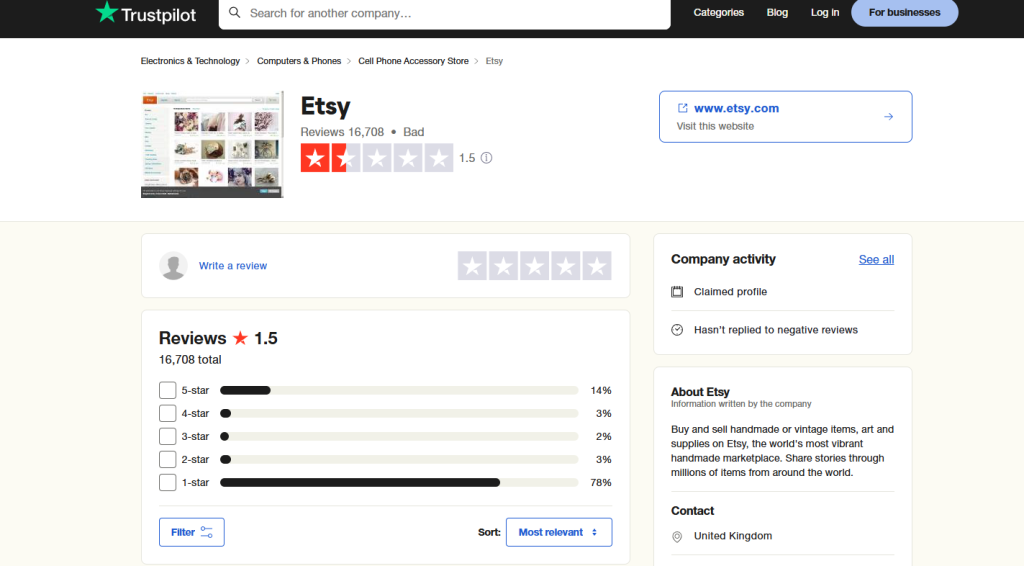
Printify's global print network operates like a well-oiled machine, offering consistent shipping experiences across the board. With print providers strategically located worldwide, Printify can deliver products to customers quickly and efficiently, often within 3-5 business days for standard shipping 1.
This system acts as a safety net for sellers, ensuring reliable fulfillment regardless of order volume or location. In contrast, Etsy's shipping is more of a DIY affair, with each seller responsible for their own shipping process. This can lead to inconsistent delivery times and experiences for customers, depending on the seller's efficiency and location.

When it comes to quality control, Printify acts as a vigilant guardian, implementing a three-step check system for every product: upon arrival, before printing, and after printing 2. This rigorous process helps maintain consistent quality across all orders. Etsy, on the other hand, is like a craft fair where quality can vary widely from booth to booth.
While Etsy has general seller standards, the actual quality control is left to individual sellers, which can result in inconsistent product quality and customer experiences. Printify's standardized approach provides a more reliable quality assurance process, giving both sellers and customers peace of mind.
Design and Customize Products
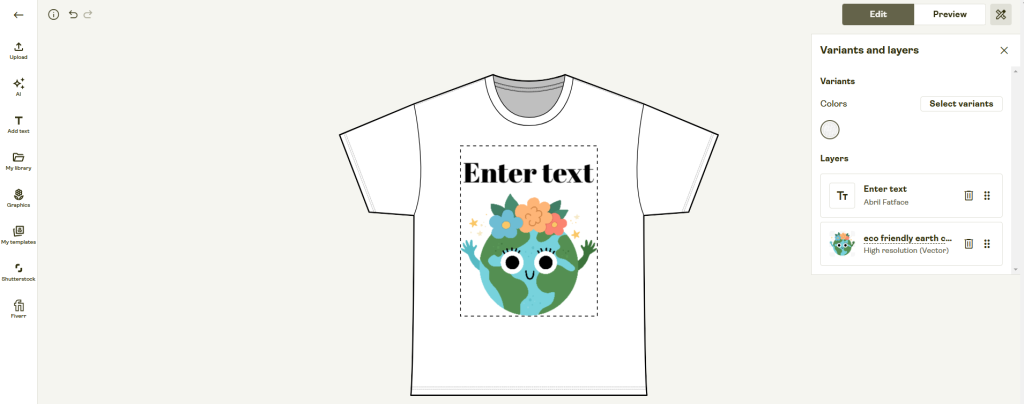
Printify's Mockup Generator is like a digital playground for product designers, offering a user-friendly interface with drag-and-drop tools and high-resolution preview images. It allows creators to customize over 1,000 products, from t-shirts to home decor, without needing external design software 1.
In contrast, Etsy sellers often rely on third-party tools or graphic design software to create product mockups, which can be like juggling multiple apps to get the job done.
When it comes to customization options, Printify offers a smorgasbord of choices. Sellers can easily add personalized text, images, or even Spotify codes to their products 2. Printify also supports up to 100 product variants, combining size and color options.
Etsy, however, limits sellers to just two dropdown menus for variations, with each menu capped at 70 values 3. This restriction can feel like trying to fit a square peg in a round hole for print-on-demand businesses looking to offer extensive customization options.
Costs and Fees Explained
Printify's pricing structure is like an open book, clearly showing production and shipping costs upfront. For example, a t-shirt might cost $9.38 to produce with $4.29 for shipping 1. This transparency allows sellers to easily calculate their profit margins and adjust pricing strategies.
Etsy, on the other hand, is more like a maze of fees. Sellers face a $0.20 listing fee per item, a 6.5% transaction fee, and payment processing fees of 3% + $0.25 3.
For a $20 t-shirt sale, Etsy fees could total around $2, significantly impacting profitability. Printify's pay-as-you-go model means you only pay when you sell, while Etsy's recurring listing fees can add up, especially for slow-moving items.
This fee structure difference can make Printify more appealing for sellers looking to maximize their profit margins, particularly when dealing with lower-priced items or during promotional periods 5.
Order Processing and Shipping
Printify's order fulfillment process is like having a robot assistant that never sleeps. When an order comes in, Printify automatically routes it to the nearest print provider, who then prints, packages, and ships the product directly to the customer 1. This hands-off approach saves sellers time and reduces errors. In contrast, Etsy's manual order processing is more like juggling multiple balls - sellers must handle each order individually, from processing to shipping.
Shipping speed with Printify is generally faster and more consistent due to its global network of print providers. Most products are delivered within 3-5 business days for standard shipping 2. Etsy's shipping speed, however, varies widely depending on individual sellers' locations and processes. This can lead to inconsistent delivery times, potentially affecting customer satisfaction.

When it comes to quality control, Printify acts as a vigilant guardian, implementing a three-step check system for every product 3. This centralized approach ensures consistent quality across all orders. Etsy, on the other hand, leaves quality control and customer service in the hands of individual sellers, which can result in varying standards and experiences for customers. While this allows for more personal interaction, it also means more responsibility for sellers in managing customer expectations and resolving issues.
Reaching Customers and Sales
Printify is like a Swiss Army knife for e-commerce, seamlessly integrating with major platforms such as Shopify, WooCommerce, Etsy, eBay, and more 1. This versatility allows sellers to cast a wide net, reaching customers across multiple marketplaces without juggling separate inventories. In contrast, Etsy operates as a standalone marketplace, limiting sellers to its own ecosystem.

Etsy boasts a massive built-in customer base of over 90 million active buyers 2, making it a goldmine for sellers looking to tap into a ready-made audience of craft enthusiasts. This is like having a bustling craft fair at your fingertips. Printify, however, doesn't come with its own customer base.
Sellers using Printify alone need to rely on external marketing efforts to drive traffic to their stores, which can be challenging for newcomers. But Printify's multi-channel integration capabilities allow sellers to leverage Etsy's audience while also expanding to other platforms, potentially reaching a broader and more diverse customer base 3.
Search and Visibility Tools
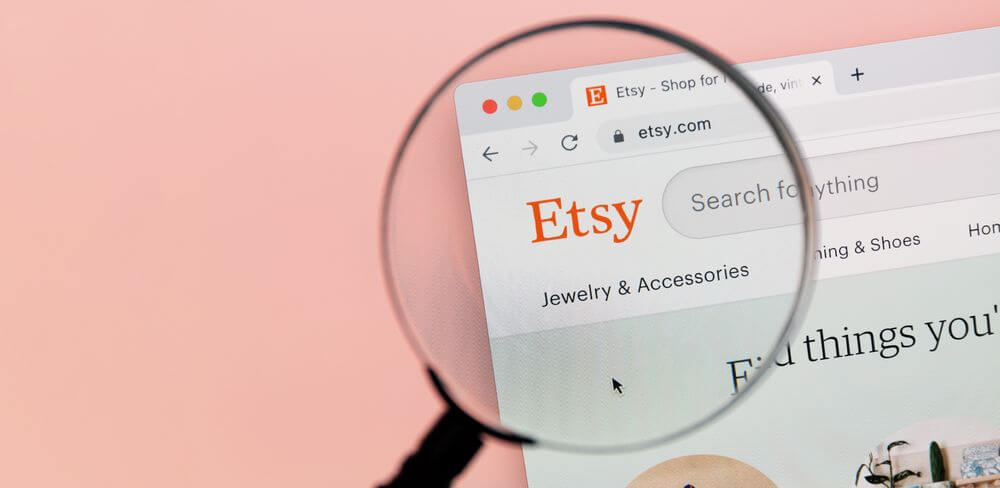
When it comes to SEO and discoverability, Etsy and Printify are like apples and oranges. Etsy's search algorithm is like a well-trained bloodhound, sniffing out relevant listings based on factors like titles, tags, categories, and even customer behavior 2.
It's designed to keep results fresh and personalized, giving new listings a temporary boost and tailoring results to individual shoppers 3.
Printify, on the other hand, is more of a blank canvas. It offers basic SEO fields like titles and descriptions, but the real SEO magic happens on the platforms where you list your Printify products.
For Etsy sellers using Printify, this means you'll need to optimize your listings directly on Etsy, using strategies like keyword research and crafting compelling titles 5.
While this might seem like extra work, it actually gives you more control over your SEO strategy across multiple platforms, potentially reaching a wider audience than Etsy alone 7.
Make Your Brand Stand Out

When it comes to branding opportunities, Printify and Etsy offer different levels of customization and flexibility. Here's a comparison of their branding capabilities:
| Feature | Printify | Etsy |
|---|---|---|
| Store Appearance | Integrates with highly customizable platforms like Shopify | Standardized store templates with limited customization |
| White-label Options | Offers white-label branding on products and packaging | Limited white-label options |
| Brand Differentiation | Flexible options for creating unique brand identity | Uniform appearance across stores |
Printify acts like a chameleon, adapting to various e-commerce platforms and allowing sellers to create a unique brand identity. When integrated with platforms like Shopify, sellers can customize every aspect of their store's appearance, from color schemes to layouts 1. This flexibility enables businesses to create a cohesive brand experience across their entire online presence.
In contrast, Etsy's approach is more like a cookie-cutter, offering standardized store templates with limited customization options. While this ensures a consistent look across the platform, it can make it challenging for sellers to stand out from the crowd.
Printify shines in white-label options, allowing sellers to add custom branding to products and packaging 2. This includes options like custom neck labels on t-shirts and personalized packaging inserts, helping businesses create a professional, branded unboxing experience for customers 3.
Etsy, however, keeps a tighter leash on branding. While sellers can add their logo and some basic information to their store page, the overall look and feel remain distinctly "Etsy," which can make it harder for individual brands to differentiate themselves visually.
Tracking Your Products
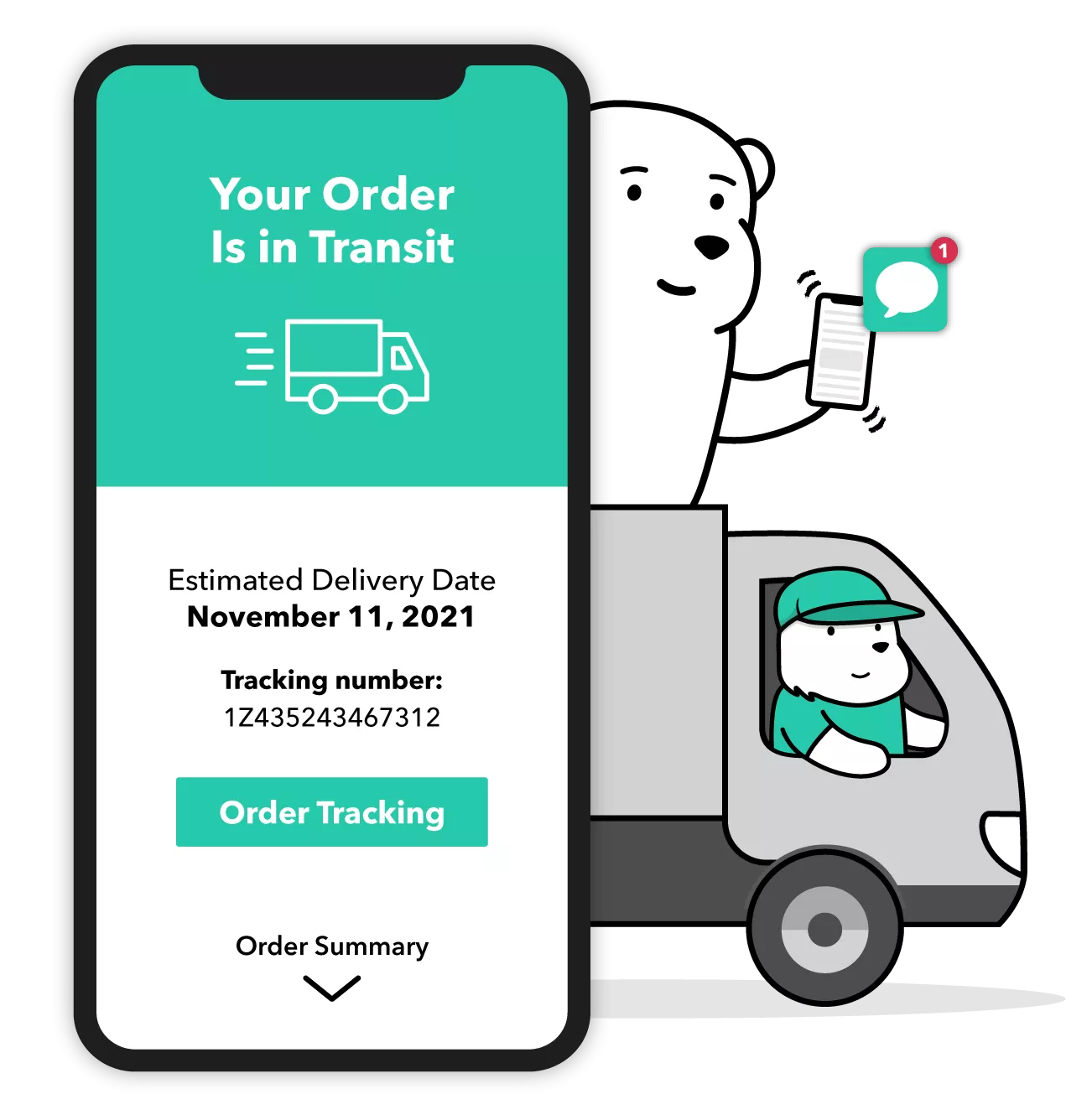
Inventory management is a crucial aspect of running a successful e-commerce business. Here's how Printify and Etsy handle stock tracking and inventory management:
| Feature | Printify | Etsy |
|---|---|---|
| Stock Updates | Automated, real-time updates | Manual tracking required |
| Inventory Model | On-demand production, no inventory | Traditional inventory for non-POD items |
| Stock-out Risk | Minimal, due to print-on-demand model | Higher risk for physical inventory |
| Scalability | Easily scalable with automated processes | Can be challenging as volume increases |
Printify's automated stock updates work like a digital inventory assistant, constantly monitoring product availability across its network of print providers 1. When integrated with platforms like Etsy, Printify automatically syncs inventory levels, reducing the risk of overselling and eliminating the need for manual stock checks. This hands-off approach allows sellers to focus on design and marketing rather than inventory management.
In contrast, Etsy's traditional inventory system requires sellers to manually update stock levels, which can be time-consuming and error-prone, especially as order volume increases 3. For non-print-on-demand items, Etsy sellers must physically track and manage their inventory, leading to potential stock-outs or overstocking issues.
Printify's on-demand production model eliminates the need for physical inventory, reducing upfront costs and storage concerns 4. Products are only produced when an order is placed, minimizing waste and allowing for easy scalability. This model is particularly beneficial for new businesses or those testing new product lines.
Etsy's traditional inventory approach for non-POD items requires sellers to maintain physical stock, which can tie up capital and create storage challenges 5. However, this model allows for immediate shipping and can be advantageous for unique, handmade items that can't be replicated through print-on-demand services.
For Etsy sellers using Printify, it's important to note that while Printify automates inventory updates, manual intervention may still be required in some cases. For example, if a product becomes out of stock with a print provider, sellers need to manually republish the listing or update it directly in their Etsy account to reflect the current availability 6.
Should you Use Printify With Etsy?
you can sell products directly from the platform using the Printify Pop-Up Store feature. This allows you to create an online store with a unique URL under the Printify.me domain, where you can list and sell print-on-demand products without needing to integrate with other platforms 1. Here’s a step-by-step guide to get started:
Steps to Sell Directly from Printify
- Create a Printify Account: Sign up for a free Printify account using your email.
- Set Up Your Printify Wallet: Configure your payment and tax settings in the Wallet section.
- Create a Printify Pop-Up Store: Go to "My new store," choose "Add a new store," and launch your Pop-Up store. Fill in the store name and country of tax residence.
- Publish Products: Browse products, design them, and publish them to your Pop-Up store.
Alternatively, you can also integrate Printify with various sales channels like Shopify, Etsy, or social media platforms to automate order processing and expand your market reach 2.
Benefits of Using Printify Pop-Up Store
- No Upfront Costs: Start selling without initial investments.
- Easy Setup: Quickly create an online store with a unique URL.
- Automated Fulfillment: Printify handles production and shipping.
Additional Options for Selling Printify Products
- Integrate with E-commerce Platforms: Use platforms like Shopify or Etsy for more advanced features.
- Sell on Social Media: Utilize platforms like TikTok Shop or Instagram Shopping through integrations or third-party apps.
Conclusion
Printify shines as a dedicated print-on-demand platform, offering automated fulfillment, a wide product range, and seamless integration with multiple e-commerce platforms 1. Its user-friendly design tools and transparent pricing structure make it an attractive option for POD entrepreneurs 2.
Etsy, while not specifically designed for POD, provides access to a vast, craft-loving audience of over 90 million active buyers 3. However, Etsy's fee structure and limited customization options can pose challenges for POD sellers 4.
For entrepreneurs starting a POD business, the choice between Printify and Etsy isn't necessarily an either-or decision. Many successful sellers use both platforms in tandem, leveraging Printify's production capabilities with Etsy's established marketplace 5.
This combination allows sellers to tap into Etsy's customer base while benefiting from Printify's streamlined POD services. Ultimately, the best choice depends on your specific business goals, design capabilities, and willingness to manage multiple platforms 6.
Try Printify today and let me know if it works for you!

